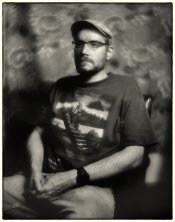kier
Member
- Joined
- Jan 26, 2007
- Messages
- 246
- Format
- Medium Format
Hi All -
I'm sharing this here to see what other experiences folks may have had. Today on my blog, I shared a photo by Croatian photographer Marko Umicevic. It's a pinhole on paper negative, with some great results: http://fslashd.com/2015/05/get-inspired-under-the-trees/
His dev technique for this photo? Rodinal 1:200, developed under inspection, for about 8 to 10 minutes. The resulting contrast and tonal range are, to me, some of the best I've seen in a paper negative in harsh light (it was contrasty direct sun in the distant buildings in the scene).
Has anyone else experimented with high dilutions of 1:100 or 1:200 for paper negatives? Marko says he normally does 1:100, but because this scene was especially contrasty, he took it a little further.
Cheers!
I'm sharing this here to see what other experiences folks may have had. Today on my blog, I shared a photo by Croatian photographer Marko Umicevic. It's a pinhole on paper negative, with some great results: http://fslashd.com/2015/05/get-inspired-under-the-trees/
His dev technique for this photo? Rodinal 1:200, developed under inspection, for about 8 to 10 minutes. The resulting contrast and tonal range are, to me, some of the best I've seen in a paper negative in harsh light (it was contrasty direct sun in the distant buildings in the scene).
Has anyone else experimented with high dilutions of 1:100 or 1:200 for paper negatives? Marko says he normally does 1:100, but because this scene was especially contrasty, he took it a little further.
Cheers!








